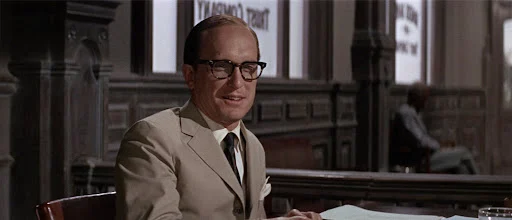Bad movies are often fun to watch anyway, and most of the people involved with The Chase, including director Arthur Penn, screenwriter Lillian Hellman, and star Marlon Brando, agreed that it was a bad movie. Brando let his opinion show, giving a sluggish performance that validates the old criticism that he mumbled his lines. Hellman had her script taken away and rewritten, and Penn struggled to deal with an ill-conceived project. The chief interest the film generates today is seeing actors like Jane Fonda, Robert Redford, and Robert Duvall on the brink of major stardom. There's a good deal of miscasting, including E.G. Mashall as the boss of a small town that seems to be in Texas or Louisiana. Marshall lacks the ruthless aura that the character needs. Angie Dickinson is wasted as the loving and dutiful wife of the town sheriff played by Brando. And Redford feels out of place in the role of Bubber Reeves, the town bad boy who escapes from prison (it's never quite clear what he did to be sent there) and stirs a manhunt, a lynch mob, and a conflagration in a junkyard. The town itself is a hotbed where everyone sleeps with everyone else's spouse and goes orgiastic on the Saturday night when the news of Bubber's escape breaks. It's a silly and lurid movie, but a little too long to be entertainingly bad.
A blog formerly known as Bookishness / By Charles Matthews
"Dazzled by so many and such marvelous inventions, the people of Macondo ... became indignant over the living images that the prosperous merchant Bruno Crespi projected in the theater with the lion-head ticket windows, for a character who had died and was buried in one film and for whose misfortune tears had been shed would reappear alive and transformed into an Arab in the next one. The audience, who had paid two cents apiece to share the difficulties of the actors, would not tolerate that outlandish fraud and they broke up the seats. The mayor, at the urging of Bruno Crespi, explained in a proclamation that the cinema was a machine of illusions that did not merit the emotional outbursts of the audience. With that discouraging explanation many ... decided not to return to the movies, considering that they already had too many troubles of their own to weep over the acted-out misfortunes of imaginary beings."--Gabriel García Márquez, One Hundred Years of Solitude
Search This Blog
Showing posts with label E.G. Marshall. Show all posts
Showing posts with label E.G. Marshall. Show all posts
Friday, July 26, 2024
The Chase (Arthur Penn, 1966)
Cast: Marlon Brando, Jane Fonda, Robert Redford, E.G. Marshall, Angie Dickinson, Janice Rule, Miriam Hopkins, Martha Hyer, Richard Bradford, Robert Duvall, James Fox, Diana Hyland, Henry Hull, Jocelyn Brando. Screenplay: Lillian Hellman, based on a novel by Horton Foote. Cinematography: Joseph LaShelle. Production design: Richard Day. Film editing: Gene Milford. Music: John Barry.
Wednesday, April 8, 2020
Pushover (Richard Quine, 1954)
 |
| Kim Novak in Pushover |
Pushover is a noirish cops-and-robbers movie that gave Kim Novak her first big role -- the only reason some people remember it. But it's a good deal better than that bit of trivia would suggest -- a well-paced, well-acted film that begins with a skillfully directed bank robbery, played entirely without dialogue. Then it cuts to mink-clad Lona McLane (Novak) coming out of a movie theater -- Pushover was made for Columbia, so the posters and marquee titles are those of 1954 Columbia releases. She finds that her car won't start, but a guy (Fred MacMurray) offers to help, then takes her back to his apartment while it's being repaired. They hit it off immediately and begin an ongoing affair. It turns out that their meeting is a set-up: The guy, Paul Sheridan, is a cop, and Lona is the mistress of one of the bank robbers, Harry Wheeler (Paul Richards), who killed a bank guard making his getaway. Sheridan is part of a team staking out Lona's apartment -- which they can see into from another apartment across a courtyard -- in expectation that she'll make contact with Wheeler. But Sheridan is a bad cop, and he soon enlists Lona in a plot to double-cross Wheeler and take the loot from the robbery. It's this dual role -- cop and robber -- that generates much of the film's suspense, as things go wrong, one by one, with their plans and Sheridan has to keep coming up with alternate plans to foil the cops with whom he is supposed to be working. One of the complications involves the occupant of the apartment next to Lona's, a nurse, Ann Stewart (Dorothy Malone), whom Sheridan's partner, Rick McAllister (Philip Carey), begins watching through his binoculars more avidly than he does the real object of the surveillance. The voyeurism in Pushover is reminiscent of Hitchcock, and though that master might have made a richer film of the material, Richard Quine does a good job of it.
Subscribe to:
Comments (Atom)








